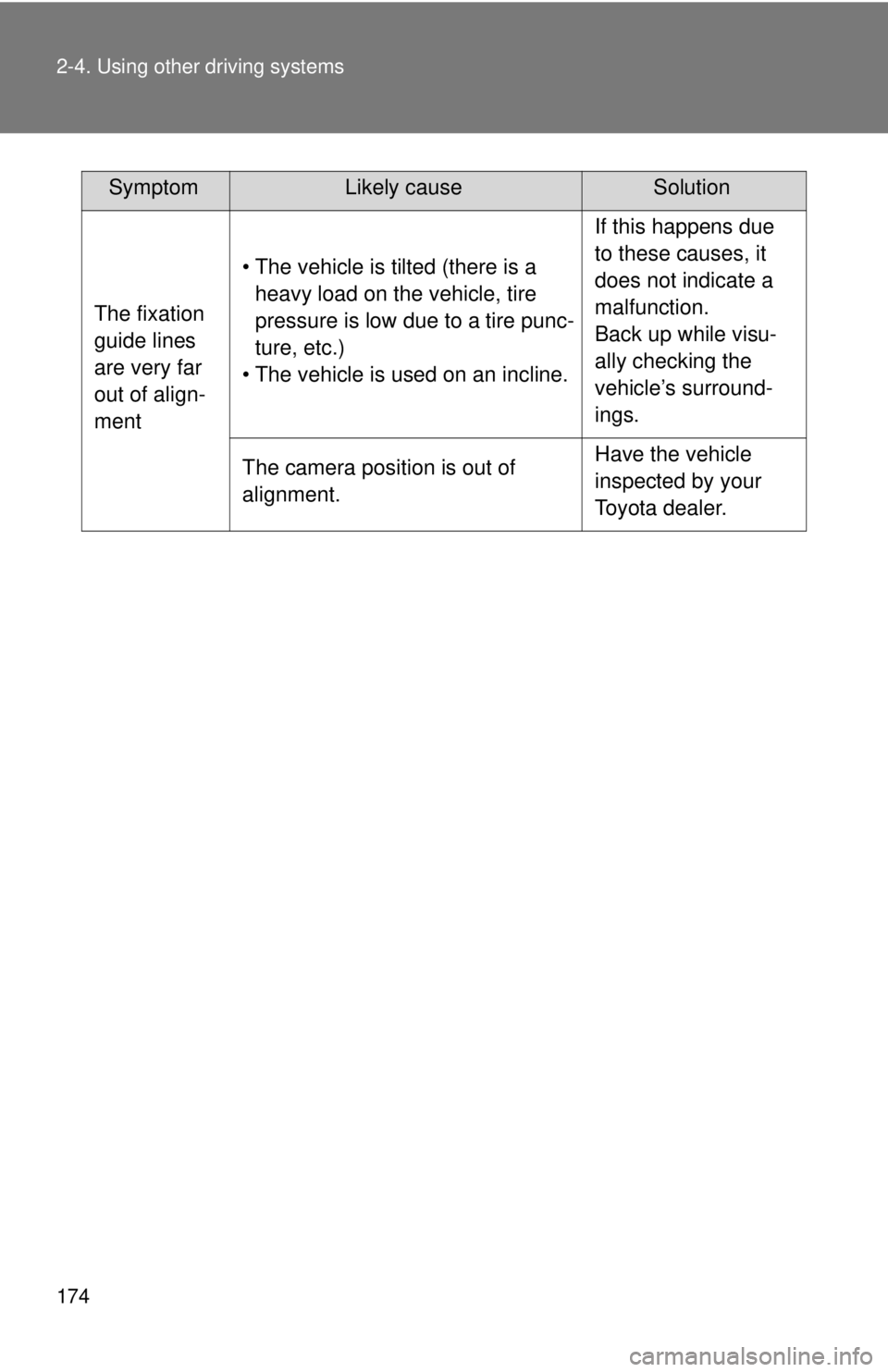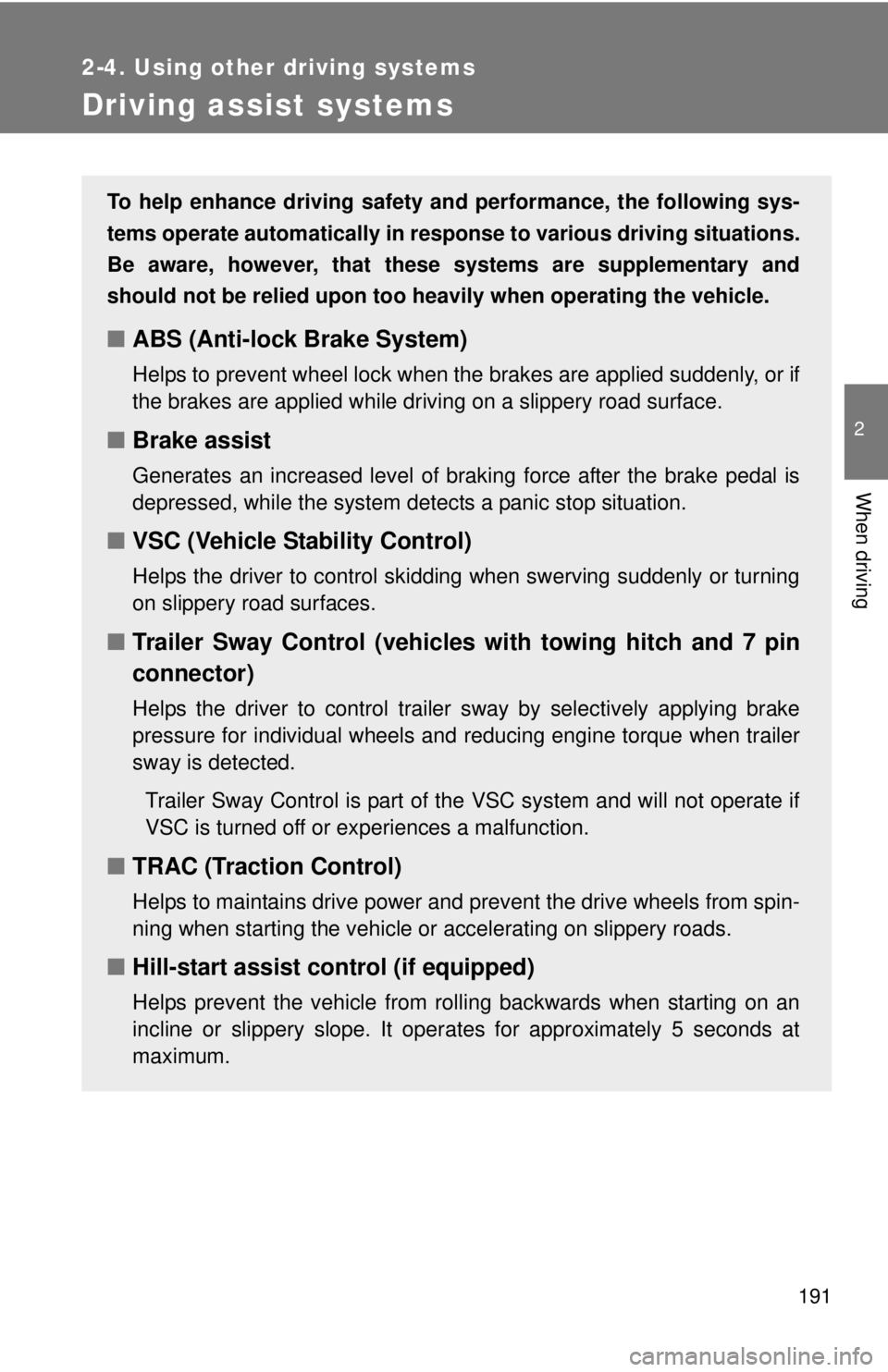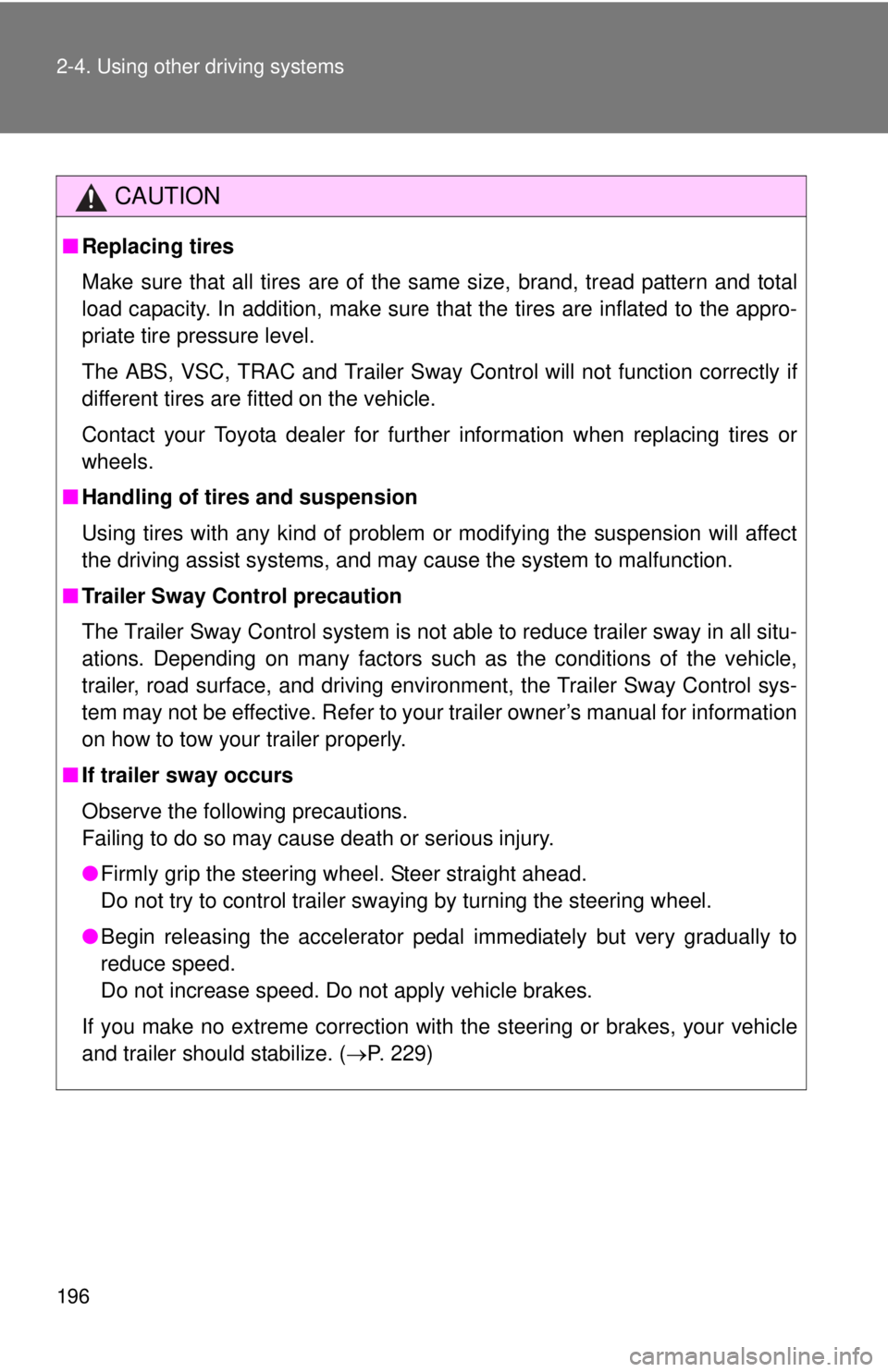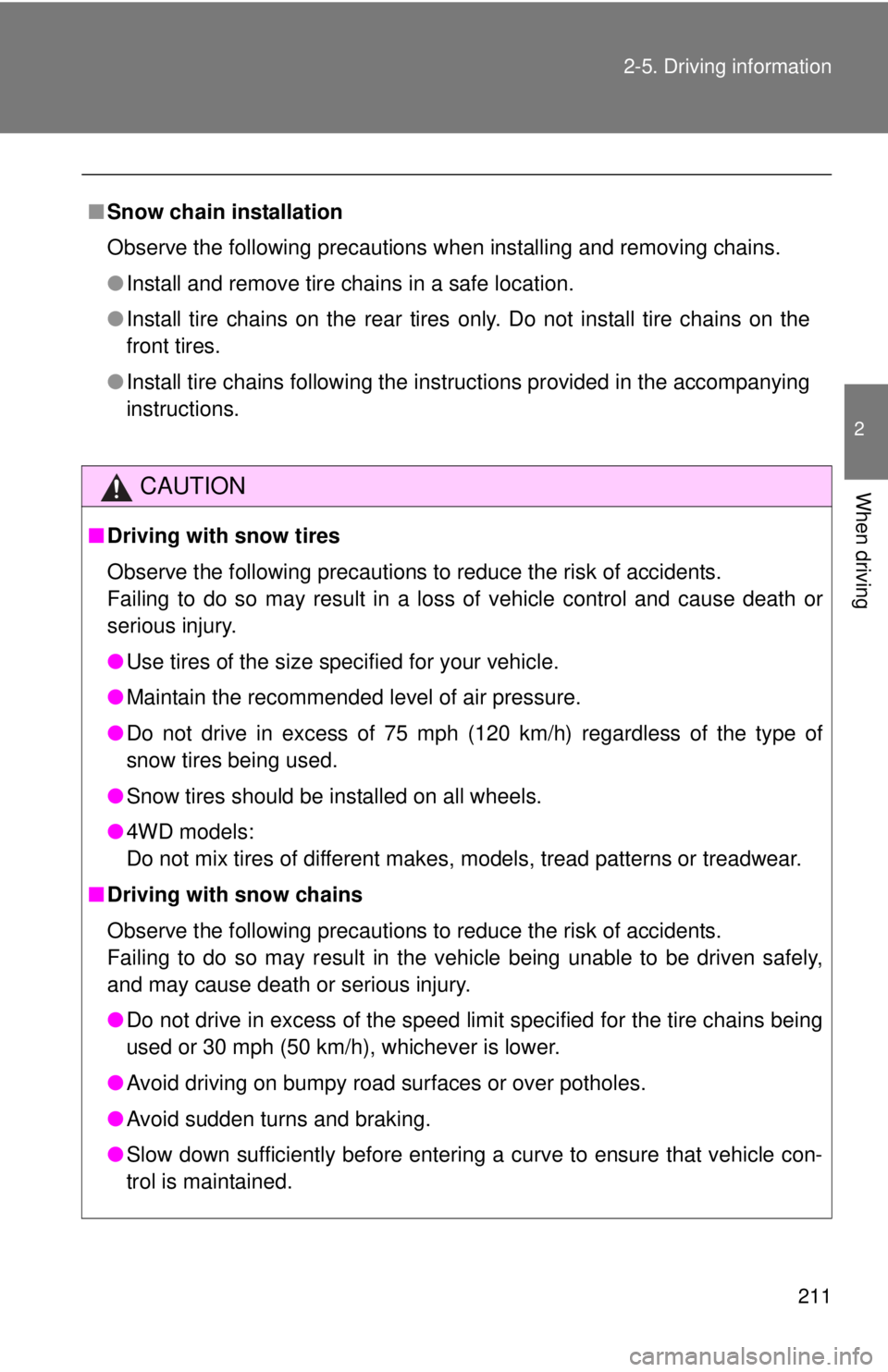pressure TOYOTA TACOMA 2015 Owners Manual (in English)
[x] Cancel search | Manufacturer: TOYOTA, Model Year: 2015, Model line: TACOMA, Model: TOYOTA TACOMA 2015Pages: 590, PDF Size: 10.75 MB
Page 4 of 590

TABLE OF CONTENTSIndex
4
3-3. Using the interior lightsInterior lights list ................. 338
• Interior light ...................... 339
• Personal lights ................. 339
3-4. Using the storage features List of storage features....... 340
• Glove box ......................... 341
• Front console box ............ 341
• Cup holders ...................... 342
• Bottle holders ................... 344
• Auxiliary boxes ................. 345
• Overhead console ............ 348
3-5. Other interior features Sun visors .......................... 349
Vanity mirrors ..................... 350
Clock .................................. 351
Power outlets (12 VDC) ..... 352
Power outlet (120 VAC) ..... 353
Seat heaters ....................... 359
Seatback table ................... 361
Floor mat ............................ 362
Luggage compartment features ............................ 364
Garage door opener ........... 373
Compass (vehicles with auto anti-glare inside
rear view mirror) ............... 381 4-1. Maintenance and care
Cleaning and protecting the vehicle exterior ........... 388
Cleaning and protecting the vehicle interior ............ 391
4-2. Maintenance Maintenance requirements .................... 394
General maintenance ......... 396
Emission inspection and maintenance (I/M)
programs
............................. 399
4-3. Do-it-yourself maintenance Do-it-yourself service precautions ....................... 400
Hood ................................... 404
Engine compartment .......... 406
Tires.................................... 422
Tire inflation pressure ......... 431
Wheels................................ 436
Air conditioning filter ........... 439
Wireless remote control battery .............................. 442
Checking and replacing fuses ................................. 444
Light bulbs .......................... 454
4Maintenance and care
Page 7 of 590

7
Tires
●Rotation
● Replacement
● Inflation pressure
● Information
P. 422
P. 486
P. 431
P. 540
Fuel filler door P. 74
Rear turn signal
lights
P. 141
Rear side marker lightsP. 152
Side doors P. 35
: If equipped
Stop/tail lightsP. 152
TailgateP. 40
License plate lights P. 152
Access doors P. 39
Page 9 of 590

9
Tires
●Rotation
● Replacement
● Inflation pressure
● Information
P. 422
P. 486
P. 431
P. 540
Fuel filler door P. 74Rear turn signal
lights
P. 141
Rear side marker lightsP. 152
Side doors P. 35
: If equipped
Stop/tail lightsP. 152
TailgateP. 40
License plate lights P. 152
Page 16 of 590

16
Pictorial indexInstrument panel
Auxiliary box P. 345
Gauges and meters P. 145
Hood lock release lever P. 404
Tilt and telescopic steering
lock release lever
P. 63
Bottle holders P. 344
Parking brake pedal P. 142
Tire pressure warning
reset switch
P. 423
: Vehicles with an automatic transmission
Page 98 of 590

98 1-7. Safety information
*4: Never install a rear-facing child restraint system on the front pas-senger seat. A forward-facing ch ild restraint system should only
be installed on the front passenger seat when it is unavoidable.
( P. 100)
*5: In case the indicator is not illu minated, consult this manual for
installing the child restraint system properly. ( P. 104)
*
CAUTION
■Front passenger occupant cl assification system precautions
Observe the following precautions regarding front passenger occupant clas-
sification system.
Failure to do so may cause death or serious injury.
● Wear the seat belt properly.
● Make sure the front passenger’s seat belt tab has not been left inserted
into the buckle before someone sits in the front passenger seat.
● Make sure the AIR BAG OFF indicator light is not illuminated when using
the seat belt extender for the front passenger seat. If the AIR BAG OFF
indicator light is illuminated, disconnect the extender tongue from the seat
belt buckle, then reconnect the seat belt. Reconnect the seat belt extender
after making sure the AIR BAG ON indicator light is illuminated. If you use
the seat belt extender while the AIR BAG OFF indicator light is illuminated,
the SRS airbags for the passenger may not activate correctly, which could
cause death or serious injury in the event of collision.
● Do not place a heavy load on the front passenger seat or equipment (e.g.
seatback table).
● Do not apply pressure to the front passenger seat by resting hands or legs
on the seatback.
● Do not let a rear passenger lift the front passenger seat with their feet or
press on the seatback with their legs.
● Do not put objects under the front passenger seat.
Page 174 of 590

174 2-4. Using other driving systems
The fixation
guide lines
are very far
out of align-
ment• The vehicle is tilted (there is a
heavy load on the vehicle, tire
pressure is low due to a tire punc-
ture, etc.)
• The vehicle is used on an incline. If this happens due
to these causes, it
does not indicate a
malfunction.
Back up while visu-
ally checking the
vehicle’s surround-
ings.
The camera position is out of
alignment. Have the vehicle
inspected by your
Toyota dealer.
SymptomLikely causeSolution
Page 191 of 590

191
2-4. Using other driving systems
2
When driving
Driving assist systems
To help enhance driving safety and performance, the following sys-
tems operate automatically in res ponse to various driving situations.
Be aware, however, that these systems are supplementary and
should not be relied upon too heavi ly when operating the vehicle.
■ABS (Anti-lock Brake System)
Helps to prevent wheel lock when the brakes are applied suddenly, or if
the brakes are applied while driving on a slippery road surface.
■Brake assist
Generates an increased level of braking force after the brake pedal is
depressed, while the system detects a panic stop situation.
■VSC (Vehicle Stability Control)
Helps the driver to control skidding when swerving suddenly or turning
on slippery road surfaces.
■Trailer Sway Control (vehicl es with towing hitch and 7 pin
connector)
Helps the driver to control trailer sway by selectively applying brake
pressure for individual wheels and reducing engine torque when trailer
sway is detected.
Trailer Sway Control is part of the VSC system and will not operate if
VSC is turned off or experiences a malfunction.
■ TRAC (Traction Control)
Helps to maintains drive power and prevent the drive wheels from spin-
ning when starting the vehicle or accelerating on slippery roads.
■Hill-start assist control (if equipped)
Helps prevent the vehicle from rolling backwards when starting on an
incline or slippery slope. It operates for approximately 5 seconds at
maximum.
Page 196 of 590

196 2-4. Using other driving systems
CAUTION
■Replacing tires
Make sure that all tires are of the same size, brand, tread pattern and total
load capacity. In addition, make sure that the tires are inflated to the appro-
priate tire pressure level.
The ABS, VSC, TRAC and Trailer Sway Control will not function correctly if
different tires are fitted on the vehicle.
Contact your Toyota dealer for further information when replacing tires or
wheels.
■ Handling of tires and suspension
Using tires with any kind of problem or modifying the suspension will affect
the driving assist systems, and may cause the system to malfunction.
■ Trailer Sway Control precaution
The Trailer Sway Control system is not able to reduce trailer sway in all situ-
ations. Depending on many factors such as the conditions of the vehicle,
trailer, road surface, and driving environment, the Trailer Sway Control sys-
tem may not be effective. Refer to your trailer owner’s manual for information
on how to tow your trailer properly.
■ If trailer sway occurs
Observe the following precautions.
Failing to do so may cause death or serious injury.
●Firmly grip the steering wheel. Steer straight ahead.
Do not try to control trailer swaying by turning the steering wheel.
● Begin releasing the accelerator pedal immediately but very gradually to
reduce speed.
Do not increase speed. Do not apply vehicle brakes.
If you make no extreme correction with the steering or brakes, your vehicle
and trailer should stabilize. ( P. 229)
Page 211 of 590

211
2-5. Driving information
2
When driving
■
Snow chain installation
Observe the following precautions when installing and removing chains.
●Install and remove tire chains in a safe location.
● Install tire chains on the rear tires only. Do not install tire chains on the
front tires.
● Install tire chains following the instructions provided in the accompanying
instructions.
CAUTION
■Driving with snow tires
Observe the following precautions to reduce the risk of accidents.
Failing to do so may result in a loss of vehicle control and cause death or
serious injury.
●Use tires of the size specified for your vehicle.
● Maintain the recommended level of air pressure.
● Do not drive in excess of 75 mph (120 km/h) regardless of the type of
snow tires being used.
● Snow tires should be installed on all wheels.
● 4WD models:
Do not mix tires of different makes, models, tread patterns or treadwear.
■ Driving with snow chains
Observe the following precautions to reduce the risk of accidents.
Failing to do so may result in the vehicle being unable to be driven safely,
and may cause death or serious injury.
●Do not drive in excess of the speed limit specified for the tire chains being
used or 30 mph (50 km/h), whichever is lower.
● Avoid driving on bumpy road surfaces or over potholes.
● Avoid sudden turns and braking.
● Slow down sufficiently before entering a curve to ensure that vehicle con-
trol is maintained.
Page 212 of 590

212 2-5. Driving information
CAUTION
■When parking the vehicle
Always use wheel blocks when parking without the parking brake. Failure to
do so may allow the vehicle to move, resulting in an accident.
NOTICE
■Repairing or replacing snow tires
Request repairs of and obtain replacement snow tires from Toyota dealers or
legitimate tire retailers.
This is because the removal and attachment of snow tires affects the opera-
tion of the tire pressure warning valves and transmitters.
■ Fitting tire chains
The tire pressure warning valves and transmitters may not function correctly\
when tire chains are fitted.